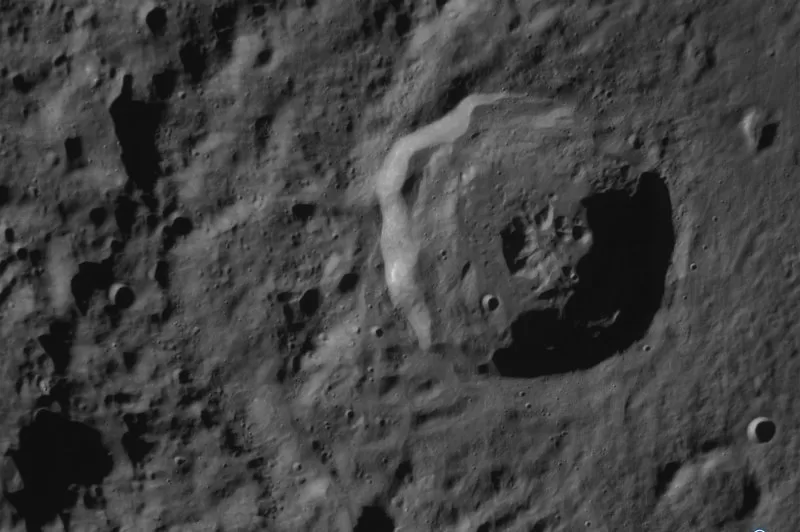Odysseus’ Terrain Relative Navigation camera captured this image of the Bel’kovich K crater in the Moon’s northern equatorial highlands in February. Scientists are working on ways to explore no-gravity environments such as the moon and asteroids. Photo courtesy of Intuitive Machines/UPI |
License PhotoApril 14 (UPI) — Scientists are finding new ways to explore low gravity environments, like the ones found on moons or asteroids.
Researchers have just wrapped up the first round of testing for SpaceHopper, a three-legged robot that will be used in pursuit of knowing what life could be like in those low or no-gravity places. SpaceHopper is being designed to be able to “jump around” on asteroids rather than drive across the terrain, or fly over it, like other explorers and rovers have done.
The SpaceHopper project is being led by a team of researchers at ETH Zurich University in Switzerland.
The SpaceHopper program was first launched two and a half years ago as a student research project at ETH Zurich University in Switzerland. Recently, researchers tested the hopping robot in a simulated zero-gravity environment during a European Space Agency parabolic flight, according to a statement from the university.
“[Asteroids] are thought to contain valuable mineral resources that could be of use to humankind in the future,” researchers said in the statement. “The exploration of these bodies could also give us insights into our universe’s formation.”
The robot consists of a triangular body with an articulated leg at each corner. Each of these three legs has a knee and a hip joint, which allow the robot to push off from a surface, kick to propel itself through space and control its landing within a designated area. SpaceHopper is designed specifically to explore relatively small celestial bodies such as asteroids and moons, where there is little to no gravity.
Exploring these types of bodies can be challenging, scientists say. In an environment with almost no gravity, there is no traction between a spacecraft’s wheels and the surface it drives across; there is barely any atmosphere for a spacecraft to fly through if there is one at all. That’s why SpaceHopper hops to move upwards and sideways.
The recent parabolic flight allowed the researchers to simulate the low-gravity conditions in which SpaceHopper may one day be deployed. A video taken during the flight shows SpaceHopper kicking each of its three legs in coordinated movements to stay lifted during periods of zero gravity, which occurred about 30 times per flight, for about 20-25 seconds each.
“The experiments were very successful. We were able to show that the robot can use its legs to reposition itself and jump in a certain direction,” the researchers said. “Overall, it was very successful.”

